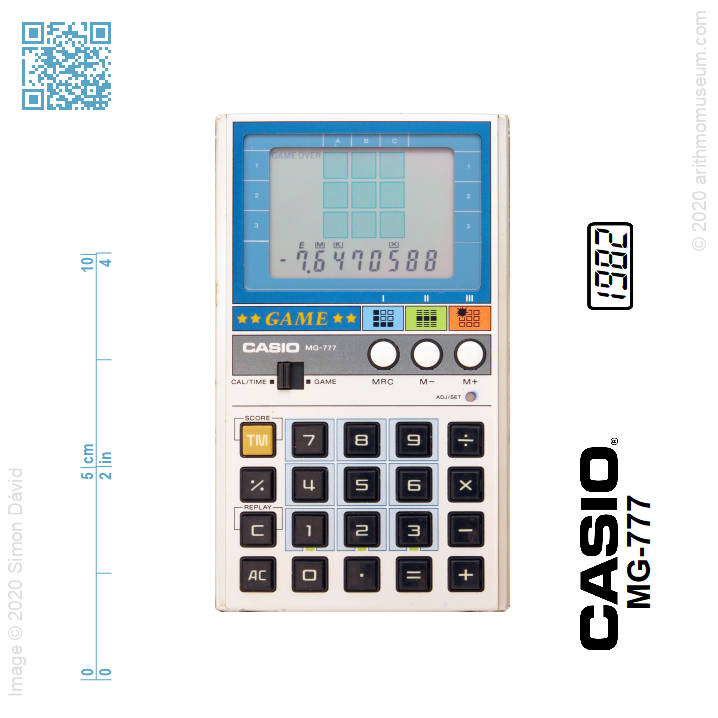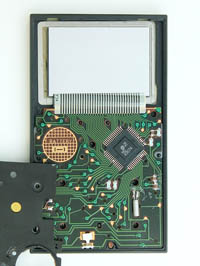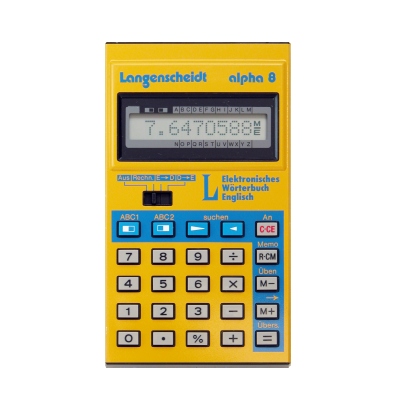Casio MG-777
| Manufacturer: | CASIO Computer Co., Ltd. (Japan) |
| Mfg. date: | 1982-83 |
| Size: | 6,9×11,7×0,9 cm |
| Weight (ready for operate): | n.a. |
| Type: | four-function |
| Capacity: | 8 digits (input/display) 8 digits (internal precision) |
| Operating logic: | algebraic |
| CPU: | Hitachi HD43574 |
| Registers: | 2 standard (with saving the pending operation) 1 constant (with saving the pending operation) 1 memory (with aritmetic) |
| Features: | %calculation with percent Ffloating-point notation |
| Display: | 8+1 digit LCD |
| Power: | 1×CR2032 battery |
Playing the MG-777
Games can be started with the mode switch set to GAME. The TM (SCORE) key can always be used to view the current score.Game 1: after pressing the AC key, you can specify the conditions of the game: first the number you want to reach (ALL SAME, you can enter values between 1 and 9), then the number of rotations or tries (TRY, you can enter values between 1 and 19). When you press the RCM key, the machine performs the specified number of rotations and displays the resulting numbers. Our task is to return to the initial state with the given number of tries (rotations). When you press one of the number keys with blue background, the value of the 5 numbers in the corresponding row and column will increase by one. After reaching maximum value (as we defined prior to the game), the numbers will increase again from 0. Use the REPLAY key to restart the current game at any time. The machine acknowledges the achievement of the goal with a sound effect, but we do not get points for it.
Game 2: Press M- to start the game. The rotation of the drums stops automatically. The goal is to have a value of 7 in all three places in one of the rows. Each drum can be rotated using the corresponding marked keys (1, 2, 3). Three "o" figures count 10 point, three "-" count 20 points, and three numbers count 10 times of its value. If two or three rows of same figures were spun, points counted twice, or quadruple.
Game 3: Press M + to start the game. The small circle that appears at a random location can be knocked by pressing the number key at the appropriate location (the number keys marked with blue background represent the cell at the appropriate location) and then pressing the number key corresponding to the displayed number as quickly as possible. If we caught the number, we get 40 points. After catching a few numbers, a H sign appears instead of a circle, for which we get 200 points. After reaching 1000 points, we get to the next level. If we do not reach 1000 points in a round, the game ends with GAME OVER.








